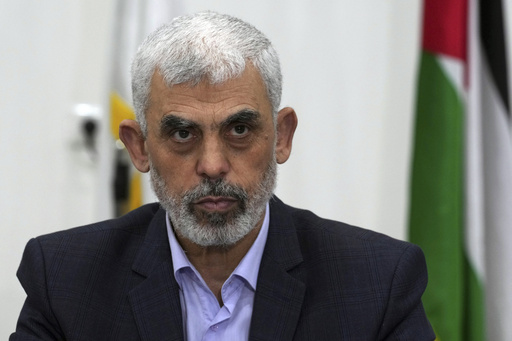Israel is currently investigating the possibility that Hamas leader Yahya Sinwar, who was instrumental in planning the attack on October 7, 2023, which ignited the ongoing conflict in Gaza, may have been killed during a military operation.
Although his death has not been officially confirmed, it would represent a crucial development in Israel’s prolonged offensive against the militant organization and might complicate efforts to secure the release of the numerous hostages held in Gaza.
Sinwar took over as head of Hamas following the death of the previous leader, Ismail Haniyeh, who was killed in an explosion in Iran in July, an incident widely attributed to Israeli action.
Sinwar’s background is notable; he was born in 1962 in a refugee camp located in Khan Younis, Gaza.
He joined Hamas soon after its formation in 1987 and eventually rose to lead the group’s security division, focused on eradicating informants for Israel.
In the late 1980s, Israel detained him, and he confessed to murdering 12 suspected collaborators, which earned him the moniker “The Butcher of Khan Younis.”
His crimes resulted in a sentence of four life terms for a series of offenses, including the deaths of two Israeli soldiers.
During his incarceration, Sinwar became a leader among prisoners, organizing strikes to improve their conditions and studying Hebrew along with Israeli culture.
In 2008, he overcame a battle with brain cancer after receiving treatment from Israeli doctors.
His release came in 2011 when Prime Minister Benjamin Netanyahu agreed to swap over 1,000 Palestinian prisoners for an Israeli soldier captured by Hamas during a raid.
Upon his return to Gaza, Sinwar swiftly ascended within Hamas, gaining a reputation for his ruthless handling of opponents.
He is widely suspected of orchestrating the 2016 assassination of fellow Hamas commander Mahmoud Ishtewi amid an internal power conflict.
Sinwar’s leadership effectively granted him control over Gaza, and he collaborated with Haniyeh to strengthen ties with Iran and other regional proxies, while also enhancing Hamas’ military capabilities.
Sinwar is believed to have played a key role in coordinating the surprise attack on Israel on October 7, alongside Mohammed Deif, who heads Hamas’ armed wing.
The assault resulted in approximately 1,200 Israeli fatalities, primarily civilians, and has led to over 42,000 Palestinian deaths in Gaza, according to local health authorities.
Hamas claimed that the attack was a response to Israel’s treatment of Palestinians and aimed to bring the Palestinian issue back into global focus.
While Israel asserted that they killed Deif in a strike in July, Hamas maintains he is still alive.
Currently, Sinwar is reportedly in hiding since the attack, with cease-fire negotiators indicating that it takes several days to communicate with him.
Before becoming the overall leader of Hamas, he was thought to have the final say on any negotiations concerning the release of hostages held by the group.
Presently, around 100 hostages remain in Gaza, with estimates suggesting that approximately a third of them may have died.
The potential impact of Sinwar’s possible death on Hamas remains uncertain, particularly concerning who might succeed him and the implications for cease-fire talks.
Those negotiations have stalled since August after extensive discussions mediated by the United States, Egypt, and Qatar.
Hamas boasts hundreds of thousands of supporters both in Gaza and in the Israeli-occupied West Bank, as well as in Palestinian refugee camps throughout the region.
Several key leaders of the group are based in Qatar, which has acted as a facilitator between Israel and Hamas in the past.
Over the years, Israel has arrested or eliminated numerous high-ranking Hamas leaders and commanders; however, the militant organization has been quick to replace them.
Historically, Hamas has not engaged in a drawn-out conflict with Israel, which claims to have destroyed dozens of senior militants and over 17,000 fighters, though the evidence for these assertions has not been substantiated.
